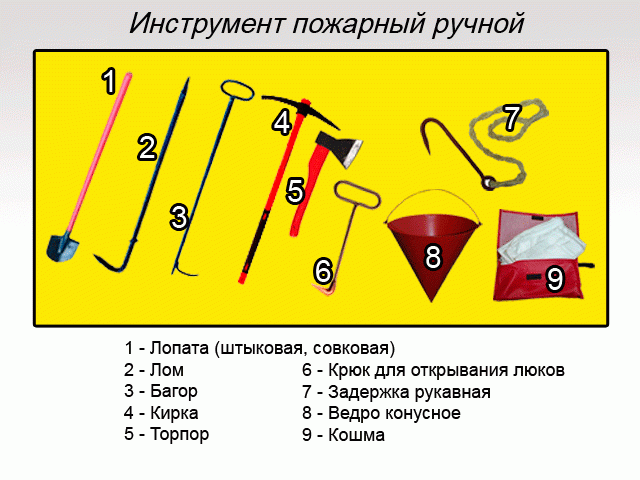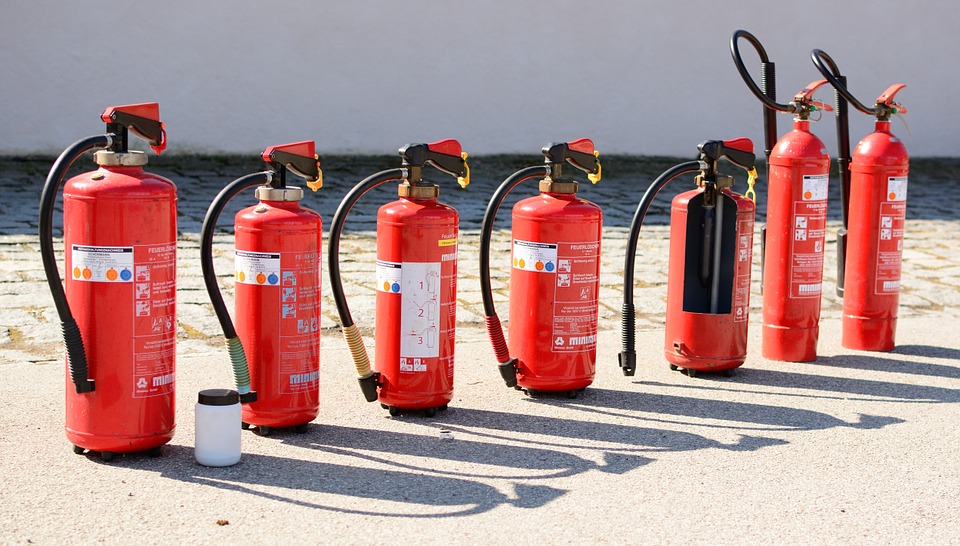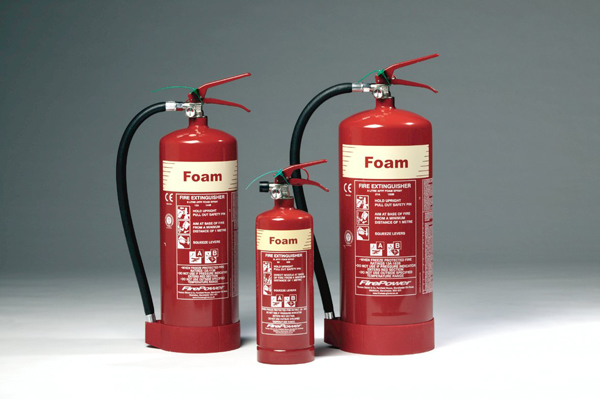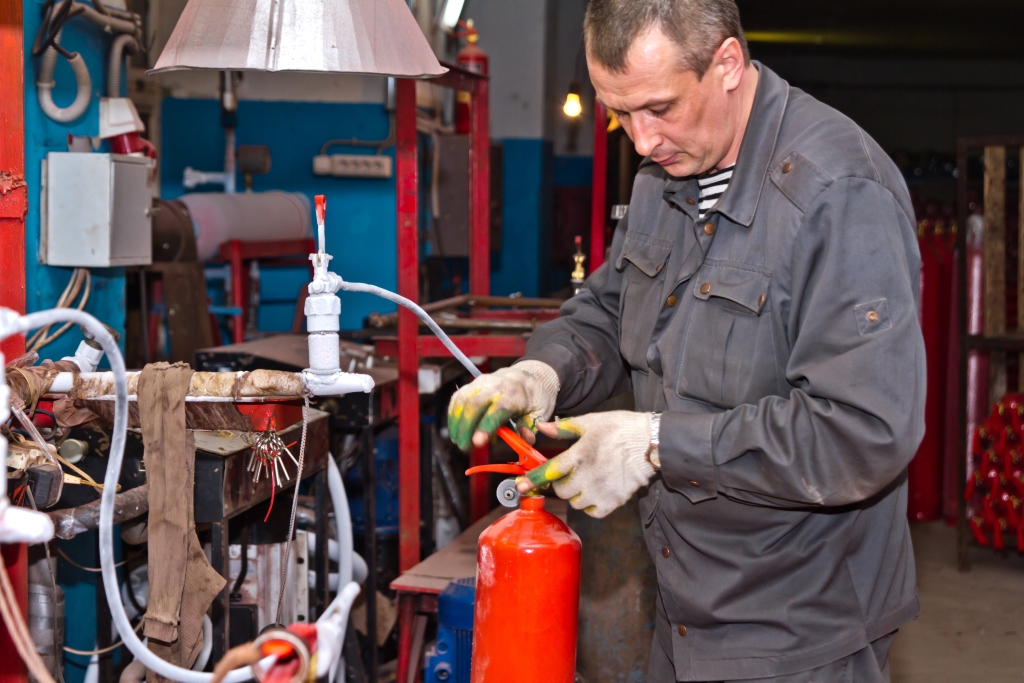The procedure for the maintenance and placement of primary fire extinguishing equipment
Many are interested in the question of where the primary fire extinguishing means should be located in order to quickly use them at the right time. Such interest is also due to the fact that sometimes the means are used for other purposes, they ignore the rules of content. Should they be locked, or can they be left in a conspicuous place? What is the order of their content?
General rules
Shields and cabinets are provided to accommodate the primary means of fire fighting. It is in them that the well-known fire extinguishers, buckets, shovels and other equipment are kept.
Shields are installed in warehouses, back rooms, transit points for the transportation of goods, garages, in the yards of enterprises and organizations. The placement is carried out in such a way that the funds are not exposed to direct rays of the sun, rain and snow. Shields covered with a net are used if they are located in places where many people pass, including strangers. The placement of open boards takes place in the areas of enterprises, where access is prohibited to outsiders or is provided by passes.
Boards, cabinets and fire extinguishing equipment are painted in signal colors, in accordance with the requirements of GOST "Colors for signaling and safety signs".
It is recommended that the placement of primary fire extinguishing equipment be in rooms, offices and warehouses where the likelihood of fire is highest. They are installed near electrical equipment, in laboratories, storage facilities with flammable liquids, for example, with fuel. Fire extinguishing means are installed near escape routes in public buildings. At the same time, care must be taken that such placement does not interfere with the movement of people.
All must be constantly in working order, and must be inspected, cleaned of dust, renewed paint.
Their service is monitored by people who know the rules and regulations for the maintenance of fire extinguishing equipment. If there are no such at the enterprise, then they turn to a licensed company that helps organize the correct maintenance and maintenance of funds.
Sand storage
Sand is used to extinguish the flammable liquid and prevent it from spreading. Sand boxes are placed near fire shields, on which another useful tool is provided - a shovel. Sand can be collected with a shovel or with a bucket hanging on the shield.
The sand must be dry, free from dirt and impurities. At least twice a year it is stirred, lumps are broken so that it can be easily raked up. For storage, boxes or shortened barrels are used. They must be closed so that excess moisture does not get inside.
Fire fighting hand tools
An important extinguishing agent is a cat or fire-resistant cloth. Electric appliances, devices and burning clothes are extinguished with a fire. To accommodate felt, fire-resistant capes and use cabinets, shields or ordinary shelves in rooms where fire is possible.

The placement of axes, hooks and shovels takes place on fire shields. The requirements for their content are as follows. They must be clean, properly sharpened, free of corrosion, with intact cuttings. Placement on the boards is carried out by hanging, so that any primary fire extinguishing means can be quickly and easily removed without resorting to additional tools.
Maintenance consists of straightening the crowbars and metal hooks of the hooks if they are bent after use. The broken handle of the shovel is replaced. Inspect the conical bucket, making sure that it is intact without strong dents or changes in shape.
There should be 2 fire extinguishers on each floor of a public building. Other premises also require their placement, in accordance with fire safety rules.
Since there are quite a few types of fire extinguishers, the order of their maintenance must be observed in accordance with the technical documentation. But there are also basic requirements for placement and content, common to all species.

- Each item must be numbered and signed. Use white paint or tags.
- There must be a seal on the manual release mechanism.
- The location of fire extinguishers is chosen away from heating devices and direct sunlight.
- Do not choose too damp places for placement in order to prevent rapid corrosion of the housing and the starting device.
- Make sure that the primary fire extinguishing agent can be freely approached.
- The inventory must be visible, it must not be hidden in niches, on mezzanines and cabinets that are not intended for storing primary fire extinguishing equipment.
- The correct placement is such that the top was at a height of 1.5 m and no more. If the mass of the extinguisher is 15 kg or more, then the mark is lowered to 1 m.
In accordance with the maintenance procedure, a scheduled check of primary fire extinguishing equipment occurs once every six months. Unscheduled checks are carried out after each exercise or firefighting application. Defective or empty cylinders are replaced with new ones.

Primary fire-extinguishing equipment must be secured at the locations so that they do not fall from an accidental shock. The position of any object must be stable.
How are fire extinguishers serviced
All primary fire extinguishing equipment, including fire extinguishers, must undergo maintenance without fail. It includes inspection, repair, testing and refueling.
Examine externally, checking that there are no dents, deep damage. The body of the primary fire-extinguishing agent must be painted a uniform red color, without traces of rust. It should show clear instructions on how to use the product.

If there is a pressure gauge on the body of the primary fire extinguishing agent, then check its serviceability, the date of the last verification, and control the pressure inside. The fire extinguisher is weighed and the mass of its contents is determined by calculation.
Assess the condition of the spray gun and hose (if present). Nothing should prevent the extinguishing agent from escaping.
For manual fire extinguishing equipment, check their location and attachment to the wall or in the fire cabinet. For mobile fire extinguishers, check the serviceability of the chassis, attachment to the trolley.
At annual inspection, fire extinguishers are randomly opened. Their working condition is assessed and, if necessary, they are recharged or completely replaced with new copies.
Once every 5 years, all fire extinguishers are discharged, and the cylinders are cleaned and checked for strength and tightness. Inspect the seals, assess the integrity of the coating, check the locking devices, starting heads. Recharging of fire extinguishing equipment occurs in the event of a scheduled inspection, detection of a gas leak, more than normal, or after use on a fire. Do not patch or weld holes. Damaged balloon fire extinguishing means are removed from service.
Fire hydrants are an important primary fire extinguishing agent. They are housed with sleeves and nozzles in fire cabinets. The sleeves are carefully rolled up. The placement of cabinets should be 1.35 m above the ground or floor. They are made with ventilation holes. Equipment should be kept dry and clean. The sleeve is rewound once a year, changing the edge of the bed. Every 6 months, it is planned to check the taps by unscrewing them and monitoring the water pressure. The results of the check are recorded in a journal specially provided for such purposes.






